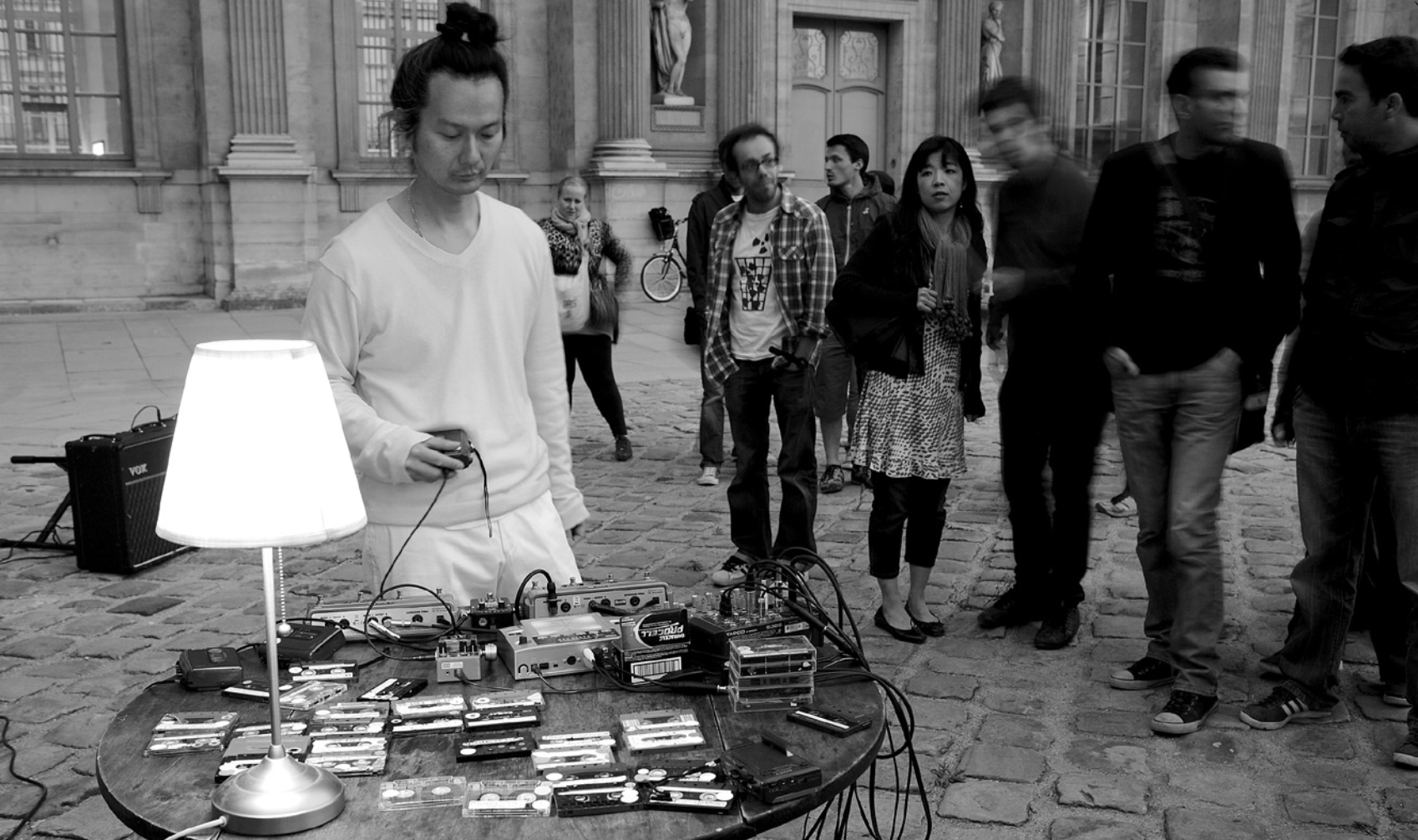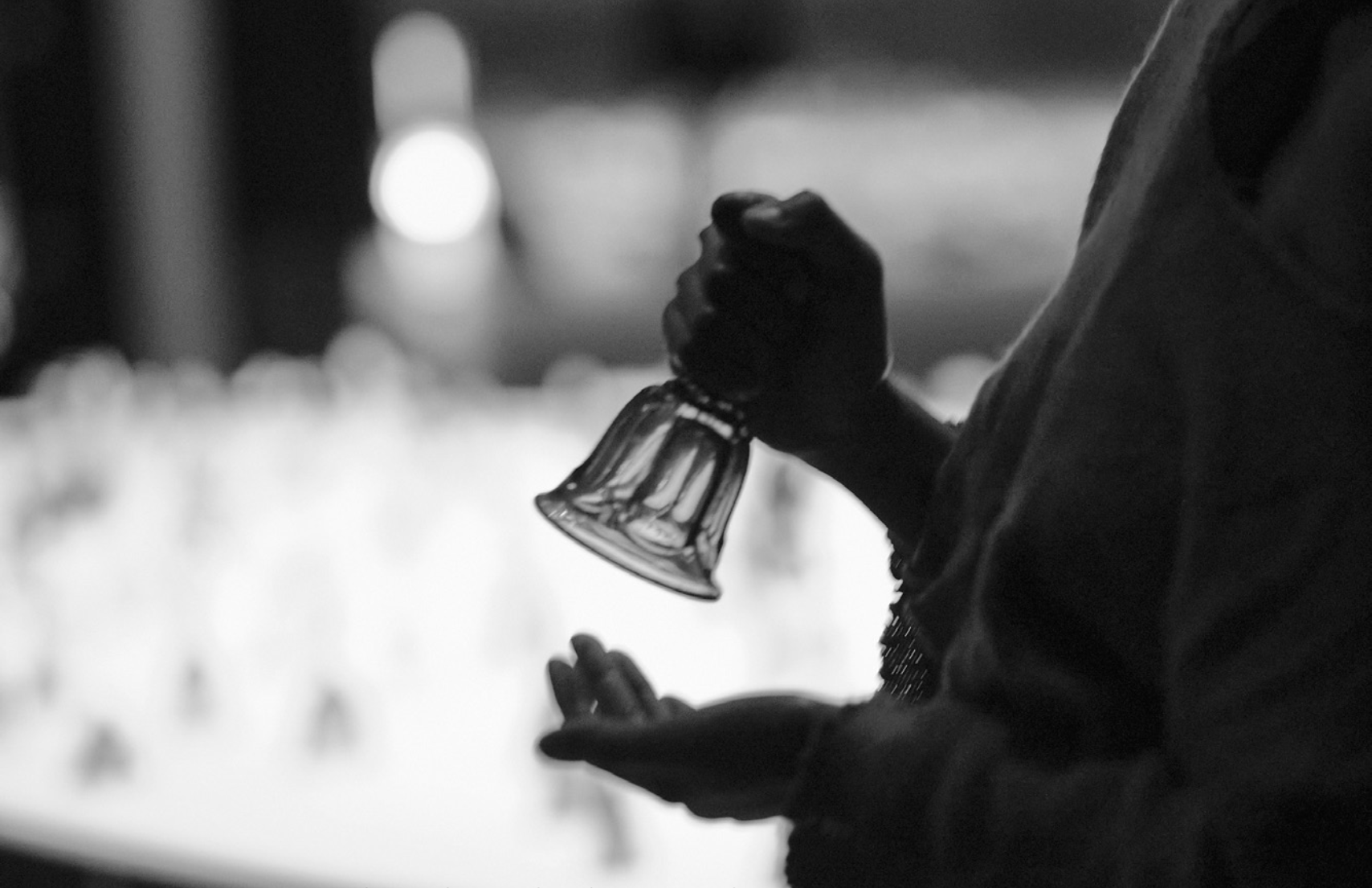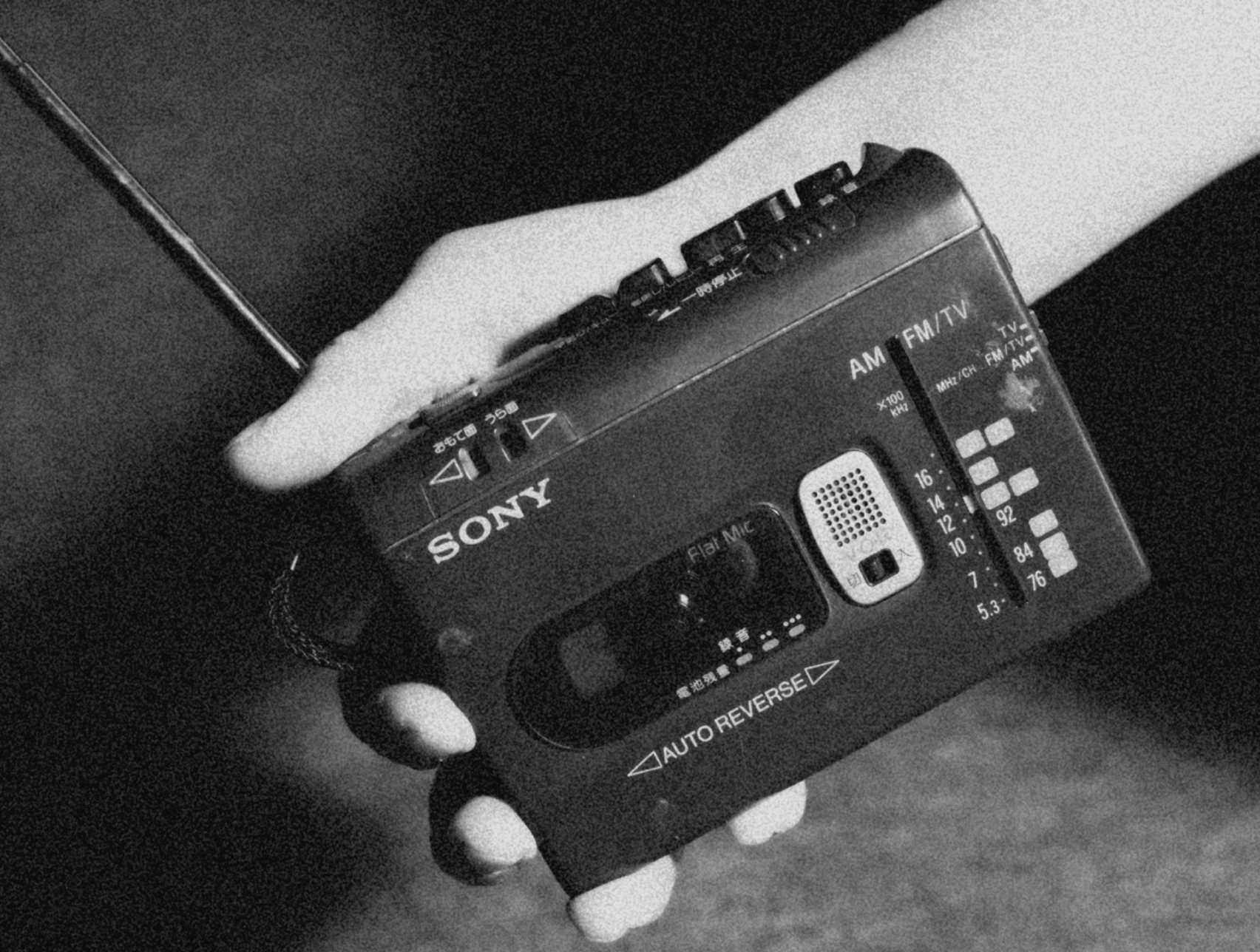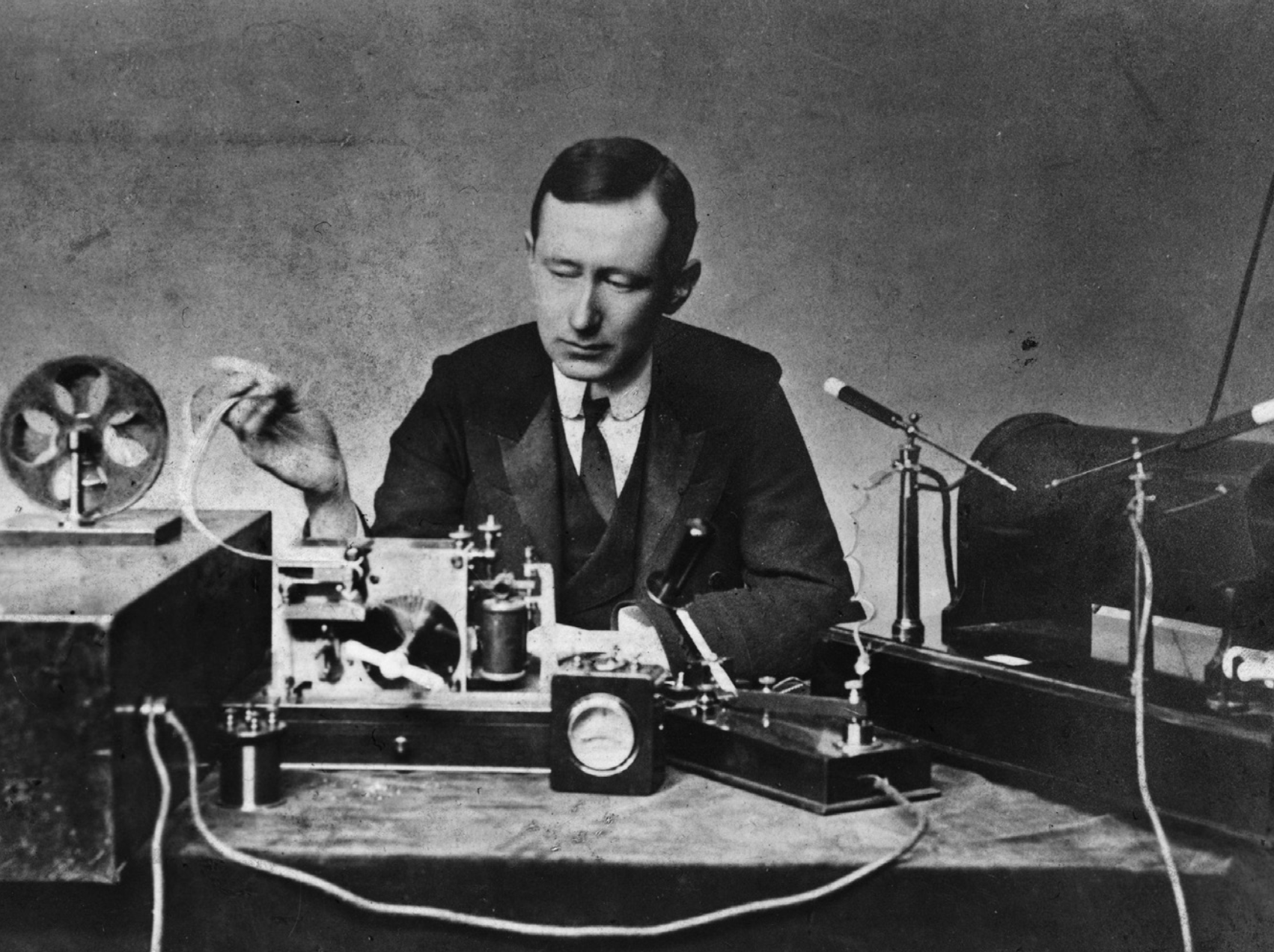
Published in the catalogue for Aki Onda’s exhibition “Spirits in Frequencies” at Casa del Lago UNAM, Mexico City, 2023
Interview by Cinthya García Leyva and Martha Riva Palacio Obón
HOW DO YOUR PROJECTS RELATE TO PUBLIC SPACE?
I care about the artworks I make and it is very important to me to consider how they function in the space where they operate. This has to do with the architecture and total design of the art environment and also with the shifting context that the works amplify. If I show a work in a gallery space or site-specific location, I take different approaches for the presentation, thinking about how encounters unfold in public spaces or indoors.
HOW HAS YOUR POSITION REGARDING SITE SPECIFIC ART EVOLVED THROUGH THE YEARS?
I’ve always been interested in “site-specification” in my work. In the late 1980s, I started making cassette field recordings of my daily life. Thinking about the information imprinted onto the magnetic tape makes me consider the relationship between the site and the document. This early work connects with my Cassette Memories project (2004 – ongoing), in which my field recordings are played at a specific location, personal memories and the memories of the site resonating with each other. I deal with the site’s specific histories and bring past memories into the present, opening them up towards the future.

1
HOW DO YOU RELATE THE CONTEXT OF YOUR ARTISTIC PRACTICE WITH OTHER TEMPORALITIES IMPLIED IN THE MATERIALS AND ARCHIVES USED IN YOUR WORK?
Time is always embedded in materials, and artists use these materials to create complex temporal experiences for viewers. Bells are now fixed silently as an installation, so that their sounds can be experienced in the imagination. At certain times during the exhibition, the installation will become a live performance with musicians. The sonority and movements of bodies drastically changes the work and its meanings, adding liveliness and time-structure expanding in multiple dimensions. I’m glad that incredible local musicians such as Darío Bernal Villegas, Chris Cogburn, and Dora Juárez Kiczkovsky will play the bells with my scores. I’m curious to see what sort of energy they bring.
HOW DO YOU RELATE THE BELLS AS A SIGNIFICANT OBJECT WITH THE PEOPLE THAT COULD EXPERIENCE YOUR INSTALLATION?
In some ancient traditions, bells were instruments of the gods, and their sounds carried sacred spirits and messages. Since then, bells have been used for announcing the beginning or ending of an event or giving some other alert or warning. In terms of this installation, each bell once belonged to individuals or groups and may have been played or served as decoration or both. I’m interested in the personal and collective memories of bells and integrating them. Ringing or imagining the sonority of the bells recall sounds and histories that would otherwise be lost and invisible. The objects tell messages to me.

2
I like that the bell has multiple functions -- some sacred, others domestic, and others banal. Even the shape of the bell speaks to movement in different directions. In statistics, a bell curve is said to demonstrative a normative distribution of values, so the transfiguration of marginal extremes is always smoothed into correspondence with values at the center. It’s complex, and that’s the tapestry of society and our everyday life ...
CAN YOU TALK ABOUT HOW YOUR PROJECT NAM JUNE’S SPIRIT WAS SPEAKING TO ME HAS STARTED?
The project began with my unexpected exposure to ethereal messages. I was listening to a mundane music show on a radio program with a Sony handheld radio in Seoul, South Korea in 2010. Suddenly, the signal switched to a murmured voice with strange electromagnetic frequency patterns. I felt strong sensations and believed that those were spiritual communication with Nam June Paik, though I had no idea what that meant. Over the next several years, I received three more messages in different cities on multiple continents. Why was Paik speaking to me? That was the question I asked myself that led me to research on spiritualism and mediumship, which eventually developed into an art project.

3
IN ENGLISH, THE WORD MEDIUM HAS A DOUBLE MEANING: THE MATERIAL WITH WHICH AN ARTIST WORKS AND SOMEONE WHO MAY SPEAK WITH THE SPIRITS. DO YOU THINK THE RADIO MAY HAVE THIS DUALISTIC FUNCTION: AS COMMUNICATION MEDIA BUT ALSO AS A GATEWAY, A PORTAL FOR MYSTERY, FOR THOSE FREQUENCIES THAT BURST IN AND UNSETTLE OUR DISCOURSE?
The origin of radio is interesting. In 1894, the British scientist and inventor Oliver Lodge presented his coherer – the first device for detecting radio waves – at a meeting of the British Association for the Advancement of Science at Oxford University. Lodge sought for his device to prove the existence of telepathy. Indeed, the invention of this medium was related to spiritualism since the beginning. This may explain the double meaning you mentioned. Putting that aside, radio transports signals across a variety of distances, even from one side of a planet to the other. We know how it works scientifically, but the phenomenon itself – sending electromagnetic waves from a transmitter, catching it with an antenna, then the aural information appearing from a speaker – still surprises me as if magic. Now, we have the internet, and the miraculous quality of radio has less impact. But when radio became popular, more than a century ago, it was a shocking and even an occult experience.

4
WHAT HAVE YOU LEARNT ABOUT NAM JUNE PAIK’S RELATION-
SHIP TO RADIO?Recently, I met Jon Huffman, who was Paik’s longtime assistant and now is the curator of the Nam June Paik Estate. He told me that Paik was interested in radio as a transmission medium, and that Paik was inspired by the ideas of one of the inventors of radio, Guglielmo Marconi. In 1897, Marconi sent the world’s first radio waves across the open water of the Bristol Channel. He called this “telegraphy without wires.” Then, in 1901, Marconi claimed to have received transatlantic radio frequency signals, which reminds me of Paik’s first satellite project Good Morning, Mr. Orwell on New Year’s Day 1984, which connected New York, Paris, and Berlin. So, possibly there is a link between Paik’s work and the early invention and technology of radio. Jon also mentioned that Paik would arrange multiple radios in his studio at times and play them loud, calling to mind John Cage’s Imaginary Landscape compositions for 12 radios, or one of Paik’s chaotic large-scale TV installations.
YOU ONCE MENTIONED THAT YOU RECOGNIZED ARTISTIC PRACTICES MAY GET US IN TOUCH WITH THE MYSTERY AND THE INEFFABLE DIMENSIONS OF CHANCE, COINCIDENCES, ACCIDENTS, AND SYNCHRONICITY, BUT THAT THIS IS SOMETHING WHICH IS BETTER NOT TO MYSTIFY. IS IT POSSIBLE THAT MYSTIFICATION, AS A FORM OF IDEALIZATION, INTERFERES WITH OUR PERCEPTION AND LISTENING?
Let’s put it in this way: the world is full of mysteries but there is always a sort of logic. Mystification tends to bypass understanding, and can be a sort of escapism.
COULD WE THINK OF ARTISTS AS SHAMANS? IN WHICH SENSE?
When I’m in the flow of making artwork, my instinct is in control and I’m no longer working consciously. In those times, I feel that I am in another dimension, which is closer to the trance states shamans enter for receiving messages. When artists are so deeply into this zone, the process itself is involuntary, as if the instrument plays itself. Indeed, if things are going well during a production, I feel ideas are coming from somewhere else, and not from me.
The practices of shamans in Indigenous societies bringing spirits or spiritual energies into the physical world have been a source of inspiration to me. I’ve been especially interested in the “itako” culture of blind female mediums summoning the souls of the dead in the Northern part of Japan, and the candomblé ceremonies in Brazil, in which practitioners possess the spirit of the orixás. I assume Paik’s interest towards the traditional Korean shamanistic Kut ritual was similar. He often quotes from pop culture, but his work can be esoteric at times.
HOW DO YOU RELATE TO MEXICO CITY AND THE RITUAL, RELIGIOUS, AND SPIRITUAL LIFE HERE?
When I visited Mexico City in 2005, I went to the Basilica of Santa María de Guadalupe on December 12, the day of Saint Mary of Guadalupe. There was a mass which drew millions of people, and in the plaza in front of cathedrals you could hear thunderous drums and dancing performed by tribes from all over the country. The beginning of this holiday and ritual was an Aztec farmer who encountered a miracle as he witnessed the Virgin Mary. Of course, this story can be disputed depending on how you see it, and there is a scent of colonialism tied to Christianity. Whatever it was, the spectacle of pilgrimage, which lasted five hundred years, is just amazing. And it’s not just about the people and the gathering: you feel the sheer energy vibrating in the air.

5
RADIO-MEMORY-SPACE. COULD YOU TELL US MORE ABOUT HOW RADIO MAY BE A POSSIBLE SPACE FOR INTERACTIONS BETWEEN IMMATERIALITIES, ABSENT OR INVISIBLE BODIES?
This is what I am trying to do with this installation of Nam June’s Spirit Was Speaking to Me. The medium for this work is radio frequencies, and we are working with a CDMX-based micro broadcasting specialist Juan Pablo Villegas to set up four transmitters to cover the site of Casa del Lago and beyond. You can imagine Christo and Jeanne-Claude’s large- scale installation covering a landmark with fabric, although here the fabric is invisible. Visitors to Casa del Lago can bring their own radios or borrow it in the lobby and explore the woods to find messages that appear through the medium.
I’ll also install signboards of Nam June Paik’s portrait, shot by the late Canadian filmmaker Michael Snow, to let visitors know that Paik’s spirit is in the air. The photographs were shot on set for Snow’s four-and- a-half-hour film Rameau’s Nephew by Diderot (Thanx to Dennis Young) in 1974, but the images weren’t used. When I mentioned this project to Michael, who also loved radio, he told me that he had perfect images of Paik in a trance state and would give me a group of them. Sadly, Michael passed away while preparing this project at Casa del Lago. So, with the images, I feel as if Michael’s spirit is also floating in the air.

6
Bells and radio are completely different media – one of them is an acoustic ornament and the other an electronic apparatus. However, my intention of adopting them is similar. They are for channeling an invisible power and making it tangible. Maybe better to call them a “receptor” than a transmitter.
WHAT IS THE ROLE OF THE BODY IN BELLS?
Our body is a medium. We use it to perceive and translate information, energy, and other stimuli. The tools we use extend from our body, and this is especially true for handbells, which are designed to resound from bodily movement. I think human beings have an ability to perceive extrasensory signals intrinsically. Society and history suppress that notion, but art and creative instruments remind of this possibility.

7
BEYOND THE BODY IN REAL SPACE, HOW CAN YOU TALK ABOUT PRESENCE IN YOUR WORK?
Part of my work involves physical presence, and this co-exists with invisible layers of memories and energy floating around. The spiritual dimension is quite important to me, and together with physical entities, the whole thing can be perceived and experienced through multisensory channels in a holistic way. I would say not just two or three dimensions, there are more dimensions. I hope that visitors feel or think about them in these installations.
Photo credits:
1) Aki Onda, Cassette Memories at Cour Carrée, Musée du Louvre, Paris, 2011. Photo by Sandrine Marc. Courtesy of Birdcage.
2) Aki Onda, Bells performance. Photo by Tojo Andrianarivo. Courtesy of Portland Institute for Contemporary Art. 3) Photo by Aki Onda.
4) Guglielmo Marconi.
5) The Basilica of Santa María de Guadalupe.
6) Michael Snow: Nam June Paik in Rameau’s Nephew’ by Diderot (Thanx to Dennis Young), 1974. Photo by Owen Carey. Courtesy of Michael Snow.
7) Photo by Aki Onda.
All rights reserved. © Images by their authors.
We have made every effort to identify the owners of the images in this publication.